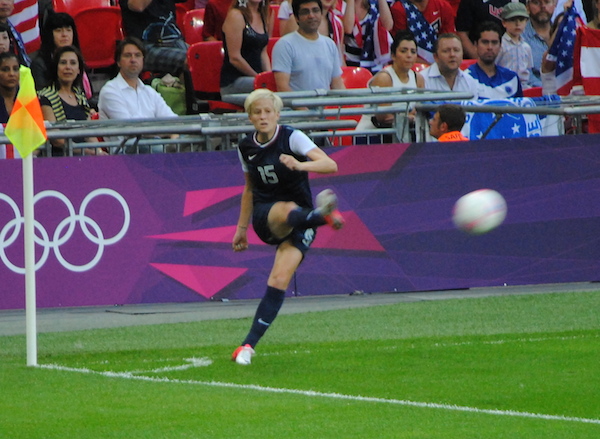Have you been watching the women’s World Cup? I have. And so far, the tournament has been extremely entertaining. Going into the tournament, some feared that this would not be the case during the Group Stage of the tournament. They feared that the expansion of the tournament from 16 to 24 teams would bring back the 10+ goal drubbings that were a feature of the first few women’s World Cups. Additionally, the 24 team setup whereby four of six third place teams qualify for the Knockout stage could easily rob the Group stage of some of its drama. So far, they have been wrong. Except for a couple games, the new additions to the tournament have held their own against more established teams, and the extra qualification slots so far have given more teams more motivation, not less. Play has been fast, wide open, and, frankly, wildly exciting at times. One tactic has jumped out at me during the first week of competition. It’s something to watch for as the tournament goes on.
A corner kick is a type of set piece that is given to an attacking team when the ball goes over the goal line of the goal they are trying to score on and it was touched by the defending team last. When this happens, play stops, the ball is placed at the corner of the field, and the attacking team gets to do whatever they like with the ball. Generally, teams use corner kicks to cross the ball, in the air, into the area in front of the goal while attacking players try to get free from their defenders, leap to meet the ball, and head it into the net. The biggest defensive threat to a corner kick is the goalie, who can come out, and thanks to her ability to use her hands, way up high on the ends of her arms, should be able to out leap even the strongest attacker. For this reason, a perfect corner kick is traditionally one that’s placed just too far away from the goalie for him to be able to get to. If you can imagine this perfect location as a shallow semi-circle around eight to ten yards away from the center of the goal, you’ll get a sense of where most corner kicks are aimed. Attacking players set up in a loose clump a few yards outside of the target area so that they can sprint quickly and erratically to a spot on that semi-circle in an attempt to get away from the defender marking them.
The goal that Thailand scores on a play that starts 10 seconds into this highlight reel is a good example of a traditional corner kick attempt that was sent marginally too close to the goalie. Thailand scores anyway, but it’s a good example nonetheless.
In several games during the Women’s World Cup, I’ve noticed an entirely different tactic on corner kicks. Instead of having players set up so they can run to a position on that mythical perfect arc, teams are choosing to clump them all right around the goal mouth instead. Once they are set up, the player taking the corner kick swings the ball in a curve towards the goal, trying to either score directly from the corner kick or in any chaos that results. Scoring directly from a corner kick is not unheard of, but it’s very rare and players who do it often admit later that it was unintentional. U.S. National Team member Megan Rapinoe said as much about the goal she scored this way in the 2012 Olympics. I’ve seen teams assign one offensive player to stand right in front of the goalie on a corner in an attempt to slow him down (I loved being that player when I played soccer) but to focus the entire corner around the idea is new to me.
Sweden relied on this tactic in their first game against Nigeria. They scored two goals early in the game off of corners. The second, at around the 30 second mark, is the best example of what I’m describing:
So, what’s this all about, will Sweden try this against the United States, and will it become a trend throughout soccer? My guess is that this tactic is one tiny symptom of the relative youth of women’s soccer as an international sport. Teams that know their opponent has a shaky goaltender may try this tactic a few times to see if it works. Any truly top-flight goalie is willing and able to shove people out of their way to get to the ball. Goalies tend to be determined crazy people (written affectionately as a former goalie) who will not be denied. A goalie like Hope Solo, long thought to be the best in the world, will stop teams from trying this tactic simply by stepping on the field. I do not think we’ll see Sweden or any other team try this against the United States. Nor do I think this will become a trend. Relying, as the tactic does, on the relative inequality in talent and skill available to different national teams, it will rapidly disappear. As the tournament goes on, only the best teams will remain and they all have good goalies. As the years go by and women’s soccer continues to grow throughout the world, the talent, skill, and resource gaps between countries will get smaller and smaller, making this tactic less and less effective.

